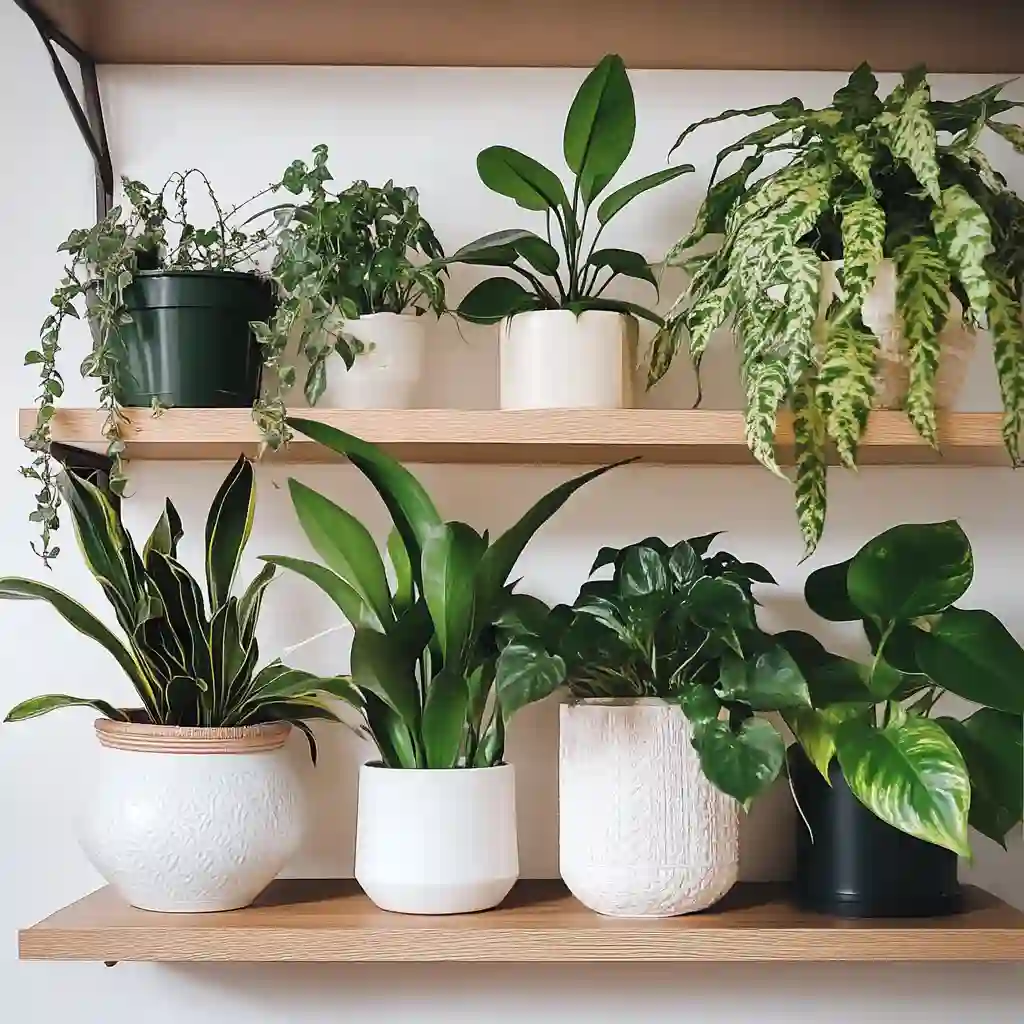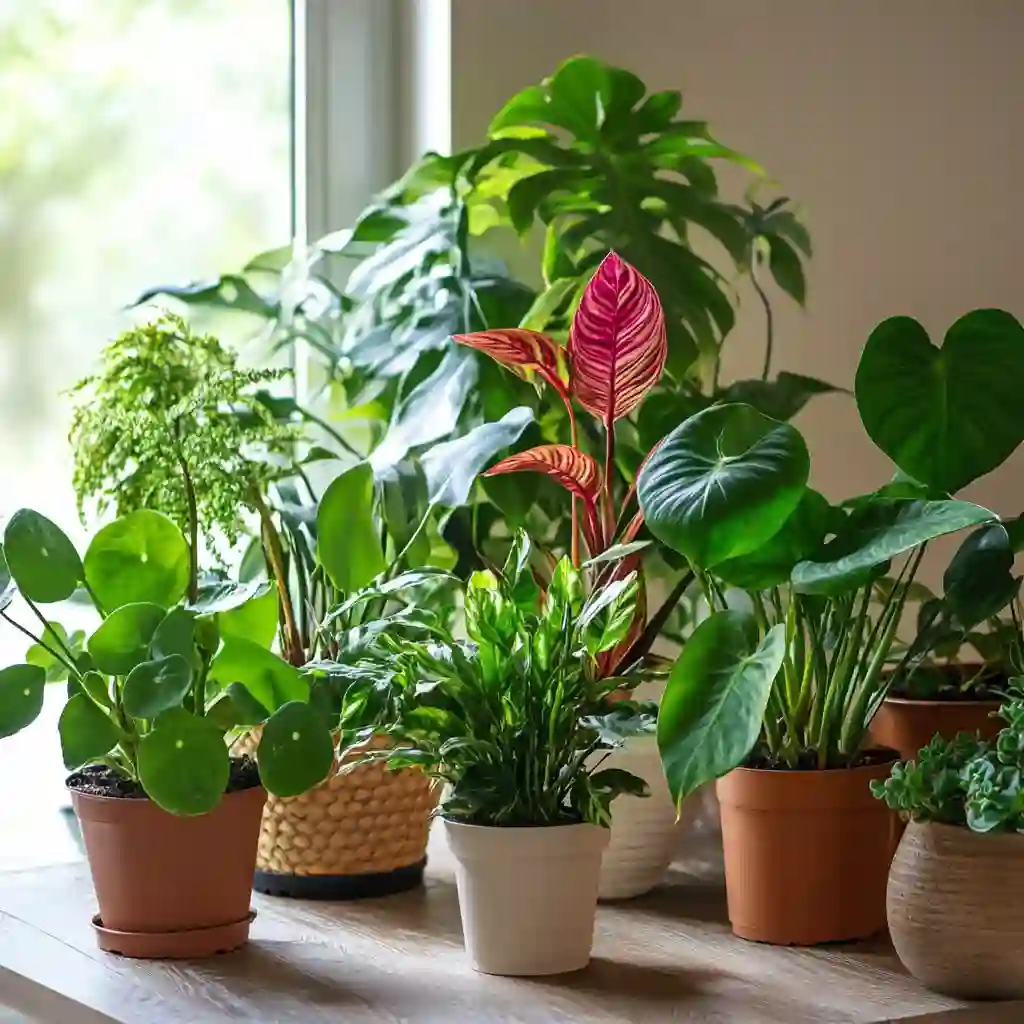Tropical indoor plants can instantly transform your living space into a lush, vibrant oasis. Beyond their striking beauty, these plants naturally purify the air, creating a healthier environment for you and your family. In this guide, you’ll discover practical, expert-approved tips to ensure your tropical houseplants thrive indoors.
Smart Watering Strategies for Lush Growth
Achieving the perfect watering balance is key to healthy tropical plants. Here’s how to do it right:
- Assess the Soil Moisture: Before watering, gently check the top inch of your pot’s soil. If it feels dry, it’s time to water.
- Promote Adequate Drainage: Make sure your planter has proper drainage holes. Excess water collecting at the bottom can damage roots and hinder plant growth.
- Optimal Water Temperature: Use lukewarm water to prevent shocking the roots. Cold water can stress your plant, while room-temperature water keeps it comfortable.
Optimizing Light & Humidity for Tropical Indoor Plants
Tropical indoor plants thrive when they receive the perfect balance of light and moisture. Here’s how to create a nurturing environment that mimics their natural habitat:
Bright, Indirect Lighting
- Filtered Sunlight: Most tropical species prefer bright, indirect light. Position your plants near a window where they can benefit from ample natural light without the harsh rays that direct sunlight brings.
- Supplemental Lighting: In rooms with limited sunlight, consider using full-spectrum grow lights. This helps simulate natural conditions and supports vigorous plant growth.
- Light Balance: Too little light can stunt growth, while too much can cause leaf burn. Aim for a spot where your plants receive a gentle, consistent glow throughout the day.
Boosting Humidity Levels
- Ideal Humidity: Tropical plants generally flourish when humidity levels are above 60%. Dry indoor air, especially in winter, may necessitate extra measures.
- Misting and Humidifiers: Regularly mist your plants with a spray bottle or use a humidifier to maintain a moist atmosphere. This not only enhances leaf vitality but also minimizes common issues like browning edges.
- Strategic Placement: Consider placing your plants in naturally humid areas, such as near a kitchen or bathroom window, to take advantage of ambient moisture.
By fine-tuning light exposure and humidity, you ensure your tropical houseplants remain vibrant and healthy—transforming your home into a lush, green retreat.
Essential Nutrients: Fertilizing Your Tropical Indoor Plants
Indoor tropical plants benefit from a steady supply of nutrients to promote vigorous growth and vibrant foliage. A tailored fertilization routine is key:
- Select the Right Fertilizer: Choose a balanced formula specifically designed for indoor plants. Outdoor fertilizers often contain excessive nitrogen that can harm delicate roots.
- Seasonal Feeding: During the active growing seasons—typically spring and summer—apply fertilizer once a month to maintain continuous growth.
- Mindful Application: Always follow label instructions to avoid nutrient burn. Over-fertilizing can stress your plants, so it’s crucial to adhere to recommended dosages.
- Watch for Signs: Keep an eye on your plants. Yellowing or scorched leaves might indicate that adjustments are needed in your fertilization routine.
With these practices in place, your tropical indoor garden will receive the nutrients it needs to thrive and add a touch of nature’s brilliance to your home.
Troubleshooting Common Challenges: Revitalize Your Tropical Indoor Plants
Even thriving tropical indoor plants can occasionally show signs of stress. Recognizing these signals early allows you to take corrective measures and keep your greenery vibrant. Here are some common issues and practical solutions:
Yellowing Leaves
Yellow leaves can indicate a range of concerns:
- Watering Imbalance: Ensure your plant isn’t overwatered or underwatered. Test the top inch of soil to maintain a balanced moisture level.
- Insufficient Light: A lack of bright, indirect sunlight might cause yellowing. Try repositioning your plant near a well-lit window.
- Pest Prevention: Inspect the foliage for any pests, such as mealybugs. If spotted, treat the plant with a gentle insecticidal solution.
Drooping Foliage
Drooping leaves are a common sign of distress:
- Watering Adjustments: Both too much and too little water can lead to drooping. Review your watering routine and adjust accordingly.
- Root Health: Drooping may also point to root issues like rot. If the roots seem mushy or smell off, consider repotting your plant with fresh, well-draining soil.
- Environmental Factors: Sudden temperature changes or drafts can stress the plant. Ensure your indoor environment remains stable.
Brown or Crispy Edges
Brown tips on leaves often signal environmental stress:
- Humidity Boost: Dry indoor air can cause leaf tips to crisp. Increase moisture around your plant by misting regularly or using a humidifier.
- Water Quality: High mineral content in tap water may harm your plant. Using distilled or filtered water can help mitigate this issue.
- Fertilizer Caution: Excessive fertilizer can lead to nutrient burn, resulting in brown edges. Stick to a balanced, indoor-specific formula and follow recommended dosages.
By addressing these issues early and tailoring your care routine, you can help your tropical indoor plants recover and flourish.
Conclusion: Cultivate Your Indoor Tropical Oasis
Caring for tropical indoor plants is both a rewarding and creative journey. By mastering the fundamentals—optimal watering, balanced light and humidity, targeted fertilization, and proactive troubleshooting—you set the stage for a thriving indoor garden that not only enhances your home’s beauty but also improves its air quality.
Every plant has its unique needs, so don’t be discouraged by the occasional challenge. Use each experience as a learning opportunity to fine-tune your care routine. With patience and attention to detail, you can transform your living space into a lush, vibrant haven that rejuvenates both your body and spirit.


